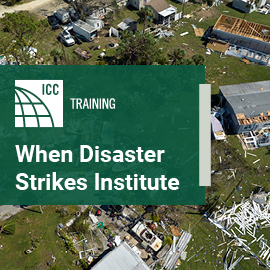
The American Jobs Plan invests in infrastructure, resiliency and sustainable construction
![]() On March 31, 2021, U.S. President Joe Biden announced the American Jobs Plan, a $2 trillion infrastructure initiative focused on repairing and upgrading infrastructure, increasing the resiliency of buildings, schools and aged care, investing in manufacturing and innovation, funding research and development in areas such as climate change, and supporting water infrastructure and efficiency. If enacted, the Plan would have a significant impact on the economy, and the construction sector in particular. The plan is expansive and its direct construction-related portion accounts for roughly half of the total.
On March 31, 2021, U.S. President Joe Biden announced the American Jobs Plan, a $2 trillion infrastructure initiative focused on repairing and upgrading infrastructure, increasing the resiliency of buildings, schools and aged care, investing in manufacturing and innovation, funding research and development in areas such as climate change, and supporting water infrastructure and efficiency. If enacted, the Plan would have a significant impact on the economy, and the construction sector in particular. The plan is expansive and its direct construction-related portion accounts for roughly half of the total.
Broadly, the American Jobs Plan can be divided into four categories. The largest is spending on buildings, schools, hospitals and aged care. Transportation infrastructure is the second-largest category, notable for the amount it proposes to spend on electric vehicles and charging stations. Various investments in jobs, manufacturing and innovation comprise the third-largest destination of funds. The final category includes spending for utilities infrastructure such as broadband and digital, the electricity grid, and water systems, including the replacement of lead piping.
Some highlights of the American Jobs Plan are included below.
Resilience
The Plan calls for $50 billion in dedicated investments to improve infrastructure resilience. Resources would be targeted to investments to support infrastructure in those communities most vulnerable physically and financially to climate-driven disasters and to build back above existing codes and standards. This proposal would leverage the Federal Emergency Management Agency’s Building Resilient Infrastructure and Communities program, the U.S. Department of Housing and Urban Development’s Community Development Block Grant program, new initiatives at the U.S. Department of Transportation, and a bipartisan tax credit to provide incentives to low- and middle-income families and to small businesses to invest in disaster resilience.
Buildings
The proposal calls to build, preserve, and retrofit more than two million homes and commercial buildings through a $213 billion investment as well as produce, preserve and retrofit more than a million affordable, resilient, accessible, energy-efficient and electrified housing units through targeted tax credits, formula funding, grants and project-based rental assistance. It would also build and rehabilitate more than 500,000 homes for low- and middle-income homebuyers through $20 billion in tax credits and encourage zoning and land-use policies that support affordable housing through a new competitive grant program. The plan would address longstanding public housing capital needs, through $40 billion to address critical life-safety concerns, mitigate imminent hazards to residents and undertake energy efficiency measures.
The Plan proposes upgrading home energy efficiency through block grant programs, the Weatherization Assistance Program, and by extending and expanding home and commercial efficiency tax credits and a $27 billion Clean Energy and Sustainability Accelerator to mobilize private investment into distributed energy resources; retrofits of residential, commercial and municipal buildings; and clean transportation. The proposal would modernize public schools through $50 billion in grants and $50 billion in bonds, community colleges through a $12 billion investment, $25 billion for childcare facilities, and $25 billion in our airports.
Workforce
The proposal calls to invest $48 billion in American workforce development infrastructure. This includes registered apprenticeships and pre-apprenticeships, creating one to two million new registered apprenticeships slots.
Water
The plan calls to replace 100 percent of the nation’s lead pipes and service lines as well as upgrade and modernize drinking water, wastewater and stormwater systems; tackle new contaminants; and support clean water infrastructure across rural America.
For a full overview of what’s in the plan, click here.








